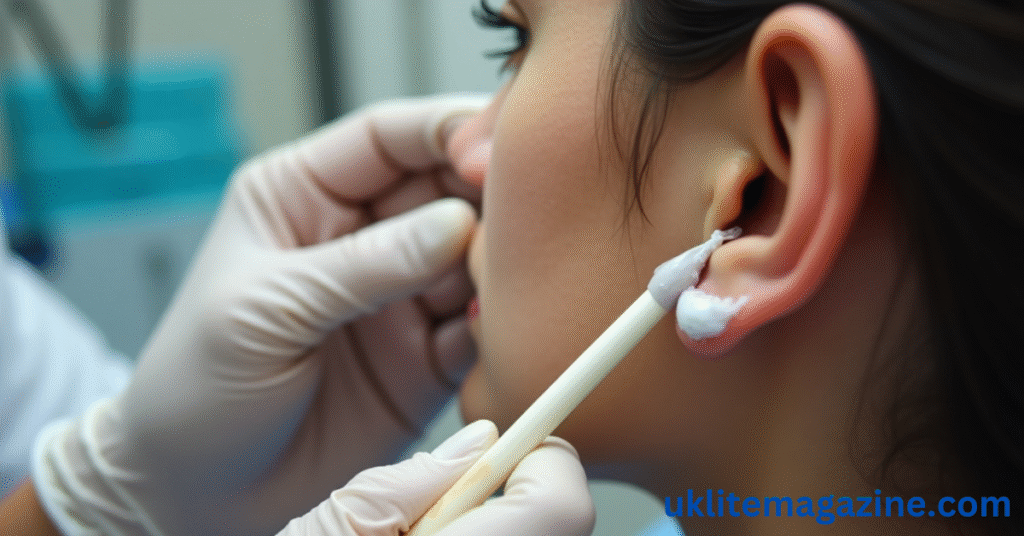Getting a piercing can be exciting, but for many people, the pain involved can be a major concern. Whether it’s your ears, nose, or another part of the body, using numbing cream for piercings is becoming an increasingly popular way to make the experience more comfortable.
But is it safe? What are the best options? And why are some piercers hesitant about using numbing products? This article explores everything you need to know about numbing creams and their use in body piercings.
What Is Numbing Cream?
Numbing cream is a topical anesthetic that temporarily dulls the skin’s sensation to reduce pain. It usually contains ingredients like lidocaine, benzocaine, or prilocaine, which block nerve signals in the skin. These creams are often used for minor medical procedures, tattoos, or waxing — and are now also being used for piercings.
Is Numbing Cream Safe for Piercings?
Yes, numbing creams are generally safe when used correctly. However, safety depends on the product’s ingredients, how it’s applied, and your skin’s sensitivity. Most reputable numbing creams are dermatologically tested and approved for use on unbroken skin.
It’s important to:
-
Follow the instructions carefully.
-
Apply it only to clean, healthy skin.
-
Avoid overuse, as high doses can cause side effects.
Also, not all body areas react the same way. For example, the earlobe and nostril tend to be more tolerant, while cartilage or sensitive zones may require more care.
Best Numbing Creams for Piercings
If you’re looking for reliable options, here are some safe and effective numbing creams for piercings:
| Numbing Cream | Key Ingredient | Best For | Application Time |
|---|---|---|---|
| Dr. Numb | 5% Lidocaine | Ears, Nose, Body | 30–45 minutes before |
| Numb Master | 5% Lidocaine | Small areas like nose or earlobe | 20–30 minutes before |
| Ebanel Numb520 | Lidocaine + Aloe Vera | All body areas | 30–60 minutes before |
| Zensa Numbing Cream | Lidocaine + Vitamin E | Sensitive skin areas | 30–45 minutes before |
These products are widely available online and in drugstores. Make sure to check customer reviews and confirm that the product is FDA-approved or recommended by dermatologists.
How to Apply Numbing Cream Before a Piercing
Proper application is key to getting the best results:
-
Clean the Area: Use mild soap and water to clean the area to be pierced.
-
Apply a Thick Layer: Spread a generous amount of the cream over the skin.
-
Cover With Plastic Wrap: This helps the skin absorb the cream effectively.
-
Wait the Recommended Time: Usually 30–45 minutes, depending on the product.
-
Wipe Off Before Piercing: Remove the cream completely before the procedure.
Always do a patch test on a small area of skin at least 24 hours before applying it fully to check for allergies.
Why Some Piercers Don’t Like Numbing Cream
Although numbing creams can be helpful, not all piercers are fans. Here’s why:
-
Altered Skin Texture: Numbing creams can make the skin more rubbery or slippery, making it harder to pierce accurately.
-
Delayed Reactions: If you’re numbed, you might not feel complications like excess pressure or incorrect piercing angles.
-
Liability Issues: Some studios prefer not to use external products for legal and safety reasons.
-
False Confidence: Clients might underestimate the healing process, thinking the cream prevents all pain.
For this reason, always talk to your piercer beforehand. Some professionals may allow you to apply your own cream if you arrive early.
Benefits of Using Numbing Cream
Despite concerns, many users report positive experiences. Here are the benefits:
-
Reduced Pain and Anxiety: Especially useful for first-timers or those afraid of needles.
-
More Comfortable Process: Helps with sensitive or hard-to-pierce areas.
-
Boosts Confidence: Knowing you won’t feel much pain can make the whole experience smoother.
Things to Keep in Mind
While numbing creams are helpful, they are not a miracle solution. Here are some final tips:
-
Avoid using expired or low-quality creams.
-
Do not apply to broken or infected skin.
-
Follow both the product and piercer’s instructions.
-
Don’t rely solely on the cream — aftercare is still critical.
Conclusion
Numbing cream for piercings is a useful tool for managing pain, especially for those with low pain tolerance or anxiety about needles. When chosen and applied correctly, these creams can offer a safer and more comfortable piercing experience. However, it’s always wise to discuss it with your piercer and do a patch test before use.
Whether you’re getting your ears, nose, or body pierced, using the right numbing cream can make a big difference — both in comfort and confidence.
Frequently Asked Questions (FAQs)
Are you allowed to use numbing cream for piercings?
Yes, in most cases, you can use numbing cream before a piercing. However, it’s always best to check with your piercer first, as some studios have specific policies.
What numbing cream is good for piercings?
Dr. Numb, Ebanel Numb520, and Zensa are some of the most recommended numbing creams for piercings due to their effectiveness and skin-safe ingredients.
How can I numb my skin before a piercing?
You can numb your skin by applying a lidocaine-based numbing cream 30–45 minutes before the procedure. Be sure to clean the area and follow the product instructions closely.
Why don’t piercers like numbing cream?
Some piercers avoid numbing cream because it can change skin texture, make piercing harder, and reduce feedback from the client during the procedure. It may also create legal or safety concerns in some studios.

